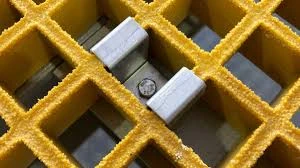
-
 Afrikaans
Afrikaans -
 Albanian
Albanian -
 Amharic
Amharic -
 Arabic
Arabic -
 Armenian
Armenian -
 Azerbaijani
Azerbaijani -
 Basque
Basque -
 Belarusian
Belarusian -
 Bengali
Bengali -
 Bosnian
Bosnian -
 Bulgarian
Bulgarian -
 Catalan
Catalan -
 Cebuano
Cebuano -
 China
China -
 China (Taiwan)
China (Taiwan) -
 Corsican
Corsican -
 Croatian
Croatian -
 Czech
Czech -
 Danish
Danish -
 Dutch
Dutch -
 English
English -
 Esperanto
Esperanto -
 Estonian
Estonian -
 Finnish
Finnish -
 French
French -
 Frisian
Frisian -
 Galician
Galician -
 Georgian
Georgian -
 German
German -
 Greek
Greek -
 Gujarati
Gujarati -
 Haitian Creole
Haitian Creole -
 hausa
hausa -
 hawaiian
hawaiian -
 Hebrew
Hebrew -
 Hindi
Hindi -
 Miao
Miao -
 Hungarian
Hungarian -
 Icelandic
Icelandic -
 igbo
igbo -
 Indonesian
Indonesian -
 irish
irish -
 Italian
Italian -
 Japanese
Japanese -
 Javanese
Javanese -
 Kannada
Kannada -
 kazakh
kazakh -
 Khmer
Khmer -
 Rwandese
Rwandese -
 Korean
Korean -
 Kurdish
Kurdish -
 Kyrgyz
Kyrgyz -
 Lao
Lao -
 Latin
Latin -
 Latvian
Latvian -
 Lithuanian
Lithuanian -
 Luxembourgish
Luxembourgish -
 Macedonian
Macedonian -
 Malgashi
Malgashi -
 Malay
Malay -
 Malayalam
Malayalam -
 Maltese
Maltese -
 Maori
Maori -
 Marathi
Marathi -
 Mongolian
Mongolian -
 Myanmar
Myanmar -
 Nepali
Nepali -
 Norwegian
Norwegian -
 Norwegian
Norwegian -
 Occitan
Occitan -
 Pashto
Pashto -
 Persian
Persian -
 Polish
Polish -
 Portuguese
Portuguese -
 Punjabi
Punjabi -
 Romanian
Romanian -
 Russian
Russian -
 Samoan
Samoan -
 Scottish Gaelic
Scottish Gaelic -
 Serbian
Serbian -
 Sesotho
Sesotho -
 Shona
Shona -
 Sindhi
Sindhi -
 Sinhala
Sinhala -
 Slovak
Slovak -
 Slovenian
Slovenian -
 Somali
Somali -
 Spanish
Spanish -
 Sundanese
Sundanese -
 Swahili
Swahili -
 Swedish
Swedish -
 Tagalog
Tagalog -
 Tajik
Tajik -
 Tamil
Tamil -
 Tatar
Tatar -
 Telugu
Telugu -
 Thai
Thai -
 Turkish
Turkish -
 Turkmen
Turkmen -
 Ukrainian
Ukrainian -
 Urdu
Urdu -
 Uighur
Uighur -
 Uzbek
Uzbek -
 Vietnamese
Vietnamese -
 Welsh
Welsh -
 Bantu
Bantu -
 Yiddish
Yiddish -
 Yoruba
Yoruba -
 Zulu
Zulu
fiberglass dual lamination
Understanding Fiberglass Dual Lamination
Fiberglass dual lamination is an advanced technique widely utilized in various industries, particularly in construction, automotive, and aerospace sectors. This process combines two essential methods—lamination and fiberglass reinforcement—to create materials that are not only durable but also lightweight and versatile.
What is Fiberglass?
Fiberglass, or glass-reinforced plastic (GRP), consists of a plastic matrix reinforced with fine glass fibers. This composite material offers several advantages, including high strength-to-weight ratios, corrosion resistance, and insulation properties. It is commonly used in applications where resilience and longevity are paramount.
The Lamination Process
Lamination involves bonding together multiple layers of material using heat, pressure, or adhesive. This process enhances the mechanical properties of the composite material, producing items that are stronger and具有更好的耐用性. In dual lamination, two layers are integrated, often utilizing different materials or resins to optimize performance for specific applications.
The Benefits of Dual Lamination
1. Enhanced Strength and Durability By combining layers of fiberglass with another material, the resulting product exhibits increased strength. The dual-layer structure can withstand significant structural stresses, making it ideal for demanding applications.
fiberglass dual lamination

2. Improved Corrosion Resistance The use of fiberglass as a surface layer protects underlying materials from environmental damage, such as moisture and chemicals. This characteristic makes fiberglass dual lamination particularly valuable in industries like marine and chemical processing.
3. Lightweight Nature Despite increased strength, the weight of dual-laminated fiberglass remains significantly lower than traditional alternatives such as metals. This feature is particularly beneficial in automotive manufacturing, where weight reduction leads to improved fuel efficiency.
4. Versatility Fiberglass dual lamination can be customized to meet specific performance requirements. By changing the type of resin or altering the laminate structure, manufacturers can produce materials suitable for a broad range of applications, from consumer products to industrial components.
5. Cost-Effectiveness While the initial investment in fiberglass dual lamination might be higher than traditional materials, the long-term savings derived from durability, lower maintenance needs, and extended lifespan justify the cost. Companies can benefit from reduced replacement and repair expenses over time.
Applications of Fiberglass Dual Lamination
The applications of fiberglass dual lamination are extensive. In construction, it is utilized for roofing, wall panels, and structural components, offering both strength and aesthetic appeal. In the automotive industry, it is used in body panels, lightweight frames, and interior components, reducing the overall vehicle weight and enhancing fuel efficiency. In aerospace, dual-laminated fiberglass parts contribute to the design of aircraft components, where every gram of weight saved can lead to significant fuel savings.
Conclusion
Fiberglass dual lamination represents a significant advancement in composite material technology. Its unique properties combine durability, lightweight characteristics, and versatility, making it an attractive option across various industries. As technology continues to evolve, the applications and benefits of fiberglass dual lamination are likely to expand, paving the way for even more innovative solutions in the materials market. Whether in manufacturing, construction, or transportation, fiberglass dual lamination provides a reliable and efficient alternative that meets the demands of modern engineering.









